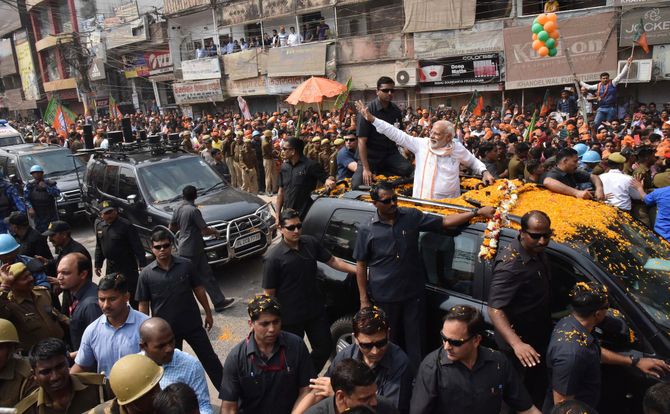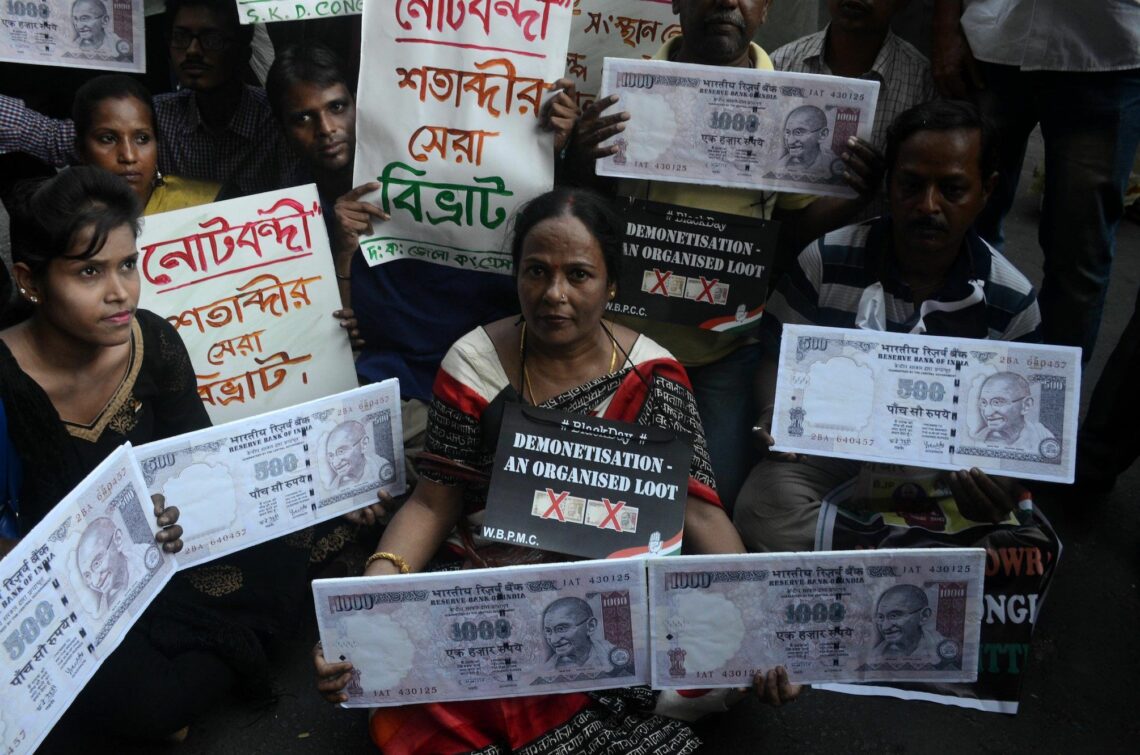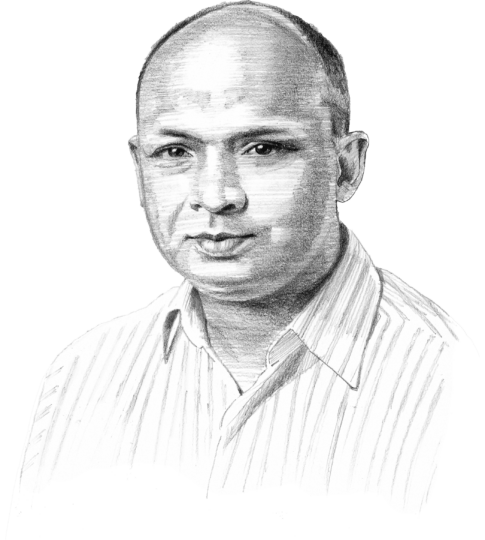Modi’s economy faces the voters
The Modi government in India entered the last year of its term with mixed economic results. The prime minister has moderated inflation and carried out important reforms, but growth remains slow, and many are pessimistic about their financial situation.

In a nutshell
- Prime Minister Modi approaches elections next year with mixed economic results
- Growth and inflation have improved but the economic recovery remains slow
- Important finance and tax reforms have held back the economy in the short term
- Modi may turn to new welfare spending to win over the electorate
The Narendra Modi government enters the fifth and final year of its term with a mixed economic report card. When the Indian prime minister was elected in 2014, the economy was stagnant, food inflation was in double-digits and nominal interest rates were among the highest in the world.
Today, Mr. Modi’s government can rightly argue that growth is on a more stable base, inflation has moderated and that major reforms have left the economy in much better health. The political question is whether this will be enough to earn Mr. Modi a second term in April’s national elections. His government knows that its reelection campaign will have less to show economically than it had hoped.
Academics and investors have praised many of the government’s economic reforms, believing they will add additional growth to the Indian economy for years to come. But the man on the street has not seen immediate, tangible benefits. According to a March 2018 poll, fewer than half of Indians believe their incomes will improve in the coming year – down 10 percentage points from two years ago.
Lagging growth
Job statistics in India have always been fuzzy. Even those who argue that employment has risen will agree that new jobs have been of poor quality. Prime Minister Modi was fortunate that a collapse in global commodity prices brought down inflation soon after he was elected. The consumer price index, which was at 8.25 percent when he came to power, stands at 4.28 percent today.
India’s average gross domestic product (GDP) growth rate during the four years of Modi rule, at 7.3 percent, is still a shade less than the 7.6 percent of the previous four years. And the IMF predicts a 7.3 percent rate for the coming year, still well short of the 9 percent experienced before 2008-2009.
Recent reforms will benefit India in the long term, but the immediate impact has been widespread economic disruption.
Dissecting the economy makes clear why India’s recovery has been so slow: a weakening investment rate. Capital formation has fallen from just over 34 percent of GDP in 2013-14 to 30.75 percent in 2017-18. Though never a major part of the Indian growth story, trade has fared unusually poorly, with exports of goods and services falling from 25.43 percent of GDP to 18.87 percent during the same period. Mr. Modi’s protectionist trade policies have been a blind spot in his economic agenda.
One thing that has held up is a traditional pillar of Indian growth, consumption. Household and government expenditure each rose by more than one percentage point during the past four years. Combined, the two figures contributed 70 percent of GDP last fiscal year.
While enough to drive the current slow recovery, consumption alone is not enough to push India’s growth into double-digit rates. The last time Indian growth neared 10 percent, in the mid-2000s, the source was high consumption figures complemented by strong private sector investment. Then-Prime Minister Manmohan Singh, an economist by training, enthused that India’s economy was “an airplane flying on two engines.”
Slow start
The manner in which that investment surge unraveled is exactly what constrains the Modi government’s economic policy today. First, the original investment binge left an overhang of idle power stations, half-empty ports and the like, which have since transmuted into an enormous bad loan problem in India’s banking sector. Growth was high but it proved unsustainable.
Second, many of the infrastructure projects were marred by corruption and regulatory shortcuts. The subsequent scandals created more stranded assets, adding to the bad loan problem. Bad loans are an old story in the Indian economy. In the past, New Delhi has bailed out the banks since most of the sector is state-owned and because the loans were often given to politically connected businesses.
Popular anger over these scandals, high inflation and the narrative that Mr. Modi was the solution to both problems helped the prime minister sweep the polls in 2014. Many of his subsequent economic reforms, including a currency demonetization in late 2016 and the introduction of a nationwide goods and services tax (GST), have been sold as attempts to drain the economic swamp. His “Mr. Clean” image remains the central plank of his reelection platform.

One consequence is a reluctance to bail out banks or let off defaulters, for fear of giving the impression that the prime minister is abetting earlier acts of cronyism. New Delhi has given an unusually free hand to regulators and courts to resolve the leftover corporate detritus. While this sounds wonderful, given India’s labyrinthine and antiquated regulatory and legal framework, the result has been gridlock. Nonperforming assets in the banking sector have continued to balloon and credit disbursement has ground to a halt. Prime Minister Modi has introduced new bankruptcy tribunals, but they are resolving debts at a snail’s pace.
Mr. Modi’s reforms have added to the economic slowdown in another way. India, like many emerging economies, has a huge informal sector. Estimated to be worth about half of GDP, this black economy has starved the government of revenue, held back productivity and eaten into formal corporate earnings. It has also been the primary source of illicit money for political parties.
The reforms already mentioned, as well as the creation of a real estate regulator, have devastated the informal sector. That will benefit India in the long term, but the immediate impact has been widespread economic disruption. Large numbers of roadside microenterprises have gone to the wall, gray supply chains have become white overnight, and sectors like real estate and jewelry that were deeply involved in black money have been leveled. This virtuous disruption has been one of the reasons that Mr. Modi is seen as having failed voters on the issue of jobs.
Too little, too late
Economic recovery is evident everywhere. Consumption is strong and business confidence is rising. One sign of investment recovery is that growth in the capital goods sector is nearly double that of consumer goods.
But the Indian economy will not have reached full health by the time elections are held, most likely in the spring of 2019. That is why Prime Minister Modi has begun to talk less about growth and prosperity and more about using tax revenues to pay for new, expansive welfare policies, including low-income housing schemes and a national health insurance plan.
Modi has begun to talk less about growth and more about using new, expansive welfare policies.
With the cycles of economic recovery and the election schedule failing to synchronize, the Indian prime minister feels he has no choice. Luckily, his reforms mean the government will have the funds to throw around. Tax collection over the past four years has risen from 6.38 trillion rupees (about $92.8 billion) to nearly 10 trillion rupees ($145 billion), with the number of returns filed nearly doubling. Mr. Modi, a fiscal hawk, believes that this tax buoyancy will allow him to both spend and broadly keep to the government’s fiscal deficit target of 3.3 percent of GDP.
Short-term problems
At the same time, the government is struggling with other, more short-term economic concerns. The most obvious is inflation, with core consumer inflation having risen above 6 percent. While partly seasonal, this is also a consequence of rising global input prices. Indian voters are historically inflation-sensitive, and Prime Minister Modi hopes that prices will moderate as the year proceeds. Business will be more concerned that the Indian central bank may feel the need to begin hiking interest rates.
Like most emerging economies, India is also battening down the hatches as foreign capital flows back to the United States because of rising U.S. interest rates and fears of a global trade war. The sell-off of Indian equities by foreign investors in 2017-18 was 64 percent higher than in 2016-17. Nonetheless, overall foreign capital flows remained in the black.
After record inflows during the past few years, India can probably afford to let some capital return home. Domestic buyers have so far filled in the gaps left in the stock market by foreign investors exiting the country. India’s foreign exchange reserves are at a record high, but the rupee has come under pressure and India’s poor export record has meant that the current account deficit has begun widening rapidly. Officials of the New York Federal Reserve assess that India is among the emerging economies best-equipped to ride out the present capital storm.
Scenarios
It seems likely that Prime Minister Modi will run for reelection with a healthy economy and full government coffers, but with voters who are less than pleased at the contents of their wallets. He will spend heavily on welfare programs to sway poorer voters and compensate for the disenchantment among his party’s traditional lower-middle-class base.
The indebted banking system will be allowed to muddle along, but the government has already started deploying friendly economists to argue that interest rates need not be increased. Foreign investors will continue to be wooed as the current account deficit widens, thanks to rising oil prices. Still, the prime minister will not make the economy the centerpiece of his election speeches, focusing more on corruption, welfare and his party’s brand of religious nationalism.
One scenario that does worry his government concerns a set of external impacts over which New Delhi has minimal control. The most obvious is a spike in oil prices because of political instability in the Middle East. Another factor is the unpredictability of American unilateralism on trade, particularly the ongoing tariff war between the U.S. and China. In a worst-case scenario, either (or both) of these events would trigger capital flight, a drop in the rupee and higher inflation. For Mr. Modi, the goal will be to ensure these do not dominate the economic narrative in the coming three quarters.
A positive version of events would see oil prices moderate and stabilize, foreign investment tick upward and most importantly, Indian companies beginning to convert their slowly-improving balance books into new investment. That would see growth rise, interest rates hold and inflation moderate. But this scenario is unlikely given global trends and is almost certain not to happen within the electoral timeframe. Investment decisions, domestic and foreign, are generally placed on hold in the run-up to an election, and there is no evidence that this year will be different.








